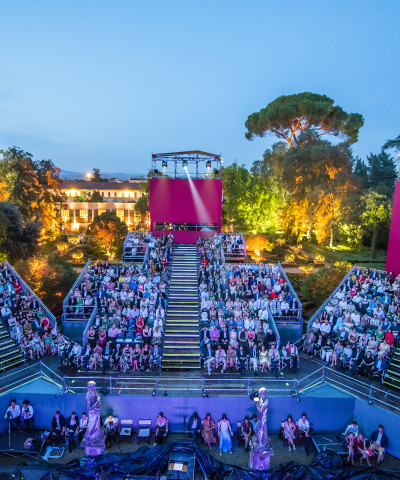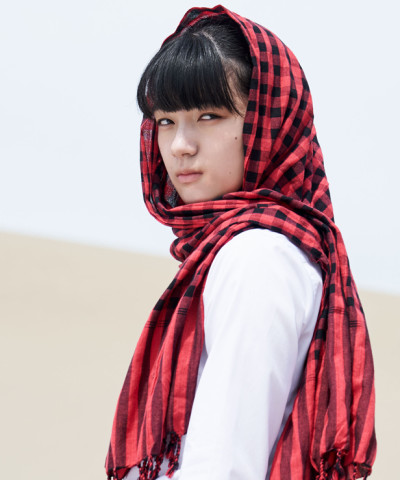All the Oscars of Florence and Tuscany
The films that took Tuscany to the top rungs of the Academy Awards
In the running for Italy in this edition is Florence-born Alice Rohrwacher (click here to read our double interview with her and her sister Alba) with her live action short film The Pupils, produced by Alfonso Cuarón, an honorary citizen of Pietrasanta (click here for our interview with the Oscar-winning director), but there are many occasions when Florence and Tuscany have contributed to winning the coveted statuette. In anticipation of the magical Oscar night, this year scheduled for March 12-13, here is a roundup.
In anticipation of the magical Oscar night, this year scheduled for March 12-13, here is a roundup:
La Dolce Vita (1962) - One of Federico Fellini's most celebrated masterpieces, which was nominated at the Oscars for best director, original screenplay and best set design, won the statuette for its costumes, which were designed by Piero Gherardi of Arezzo.
8 ½ (1963) - Another great work by Federico Fellini that won at the Oscars in 1963 for best foreign film and for costumes, also by Piero Gherardi. While the spa building inspired by those in Chianciano, regularly frequented by the director, was reconstructed in a forest near Rome, some scenes were physically shot in the queen pavilion of the Terme Tamerici in Montecatini.
Darling (1965) - Oscar-winning actress a stunning Julie Christie, along with costumes by Julie Harris and best original screenplay by Frederic Raphael. The Tuscan scenes are those in the sumptuous Villa Medicea at Poggio a Caiano.
Romeo and Juliet (1968) - Franco Zeffirelli's signature adaptation of the Shakespearean tragedy. Two Academy Awards: for photography by Pasqualino De Santis and for costumes by Danilo Donati. Of Tuscany, the Palazzo Piccolomini in Pienza is shown.
Amadeus (1984) - The story of Viennese court musician Antonio Salieri's hatred of Mozart, which depopulated at the 1984 Oscars, with no less than eight statuettes, including Best Picture, Best Director, and Best Actor in a Leading Role to F. Murray Abraham. Among the scenes were those shot on Monte Argentario, in the Grosseto area.
Room with a View (1986) - Director James Ivory's signature film adaptation of E.M. Forster's novel of the same name, set in Florence in the late nineteenth century and early nineteenth century. In addition to breathtaking views of the city and the Lungarni, the meadows of Fiesole are also glimpsed. The film won 3 statuettes: best non-original screenplay, best set design and best costumes.
The English Patient (1996) - Anthony Minghella's camera shot many Tuscan locations, including Viareggio, Forte dei Marmi, Massarosa and Ripafratta. One of the most awarded at the Academy Awards, where it was honored for best picture, best director, best supporting actress to Juliette Binoche, best cinematography, best set design, costumes, editing, best sound and dramatic score.
Life is Beautiful (1997) - The biggest Oscar win for Tuscany, Roberto Benigni, director and star, awarded best foreign film, best leading actor and best score to Nicola Piovani. Most scenes were shot in the province of Arezzo, but also in Castiglion Fiorentino, Cortona's Signorelli theater and Villa Masini in Montevarchi.
Gladiator (2003) - For his colossal, Ridley Scott chose the rolling hills of the Val d'Orcia, between San Quirico d'Orcia and Pienza, specifically in Terrapille, the set of the famous Elysian fields scene. The film took home five Academy Awards: best picture, best leading actor in Russell Crowe, costumes, special effects and best sound.
Atonement (2008) - From this film made in Tuscany is the soundtrack, by Pisan composer Dario Marianelli, also nominated for Pride and Prejudice in 2006 and Anna Karenina in 2013.
The Great Beauty (2013) - If in Paolo Sorrentino's masterpiece, which won Best Foreign Language Film in 2013, the protagonist is clearly Rome, the most attentive viewers will surely have recognized the Capel Rosso lighthouse on Giglio Island, where the protagonist Jep Gambardella, played by Toni Servillo, goes.
An honorable mention goes to Florentine costume designer Massimo Cantini Parrini, recently nominated for two Oscars: in 2021 for Roberto Benigni's Pinocchio and in 2022 for Cyrano starring Peter Dinklage, aka Tyrion Lannister in the series The Iron Throne. And to the aforementioned Alfonso Cuarón, who chose Pietrasanta as his home (click here for our interview with the Oscar-winning director), winner with Gravity in 2014 (7 statuettes in all), and with Roma, in 2019, best director, best foreign film, and best cinematography.
















